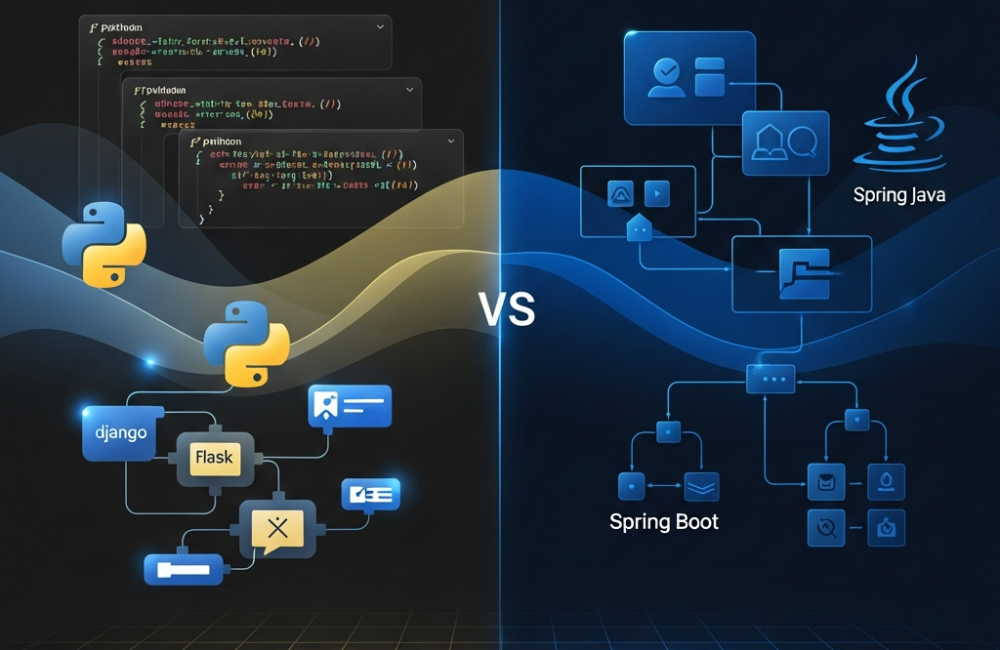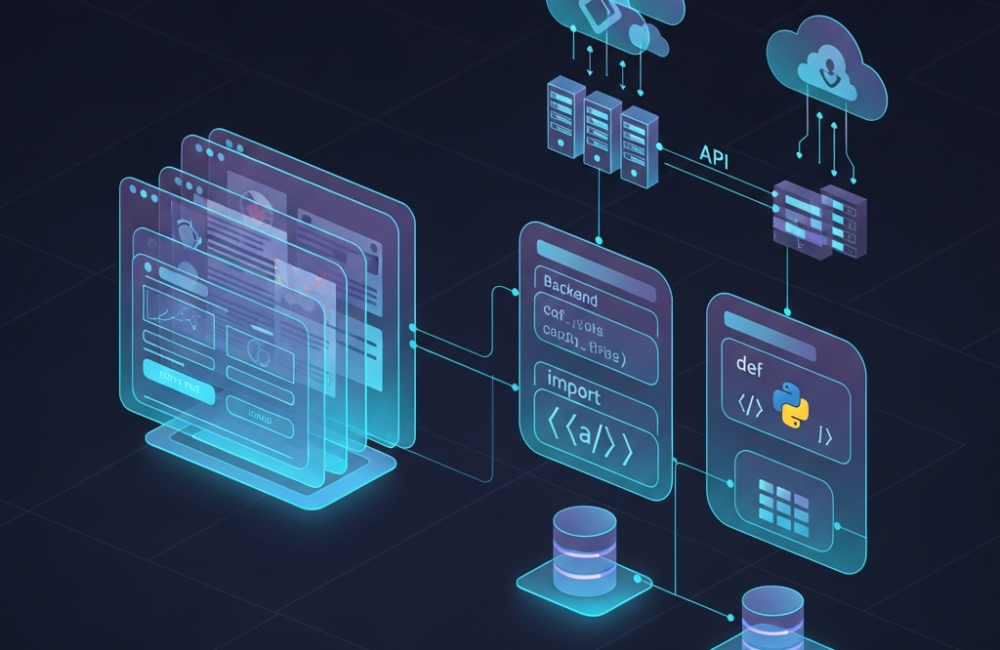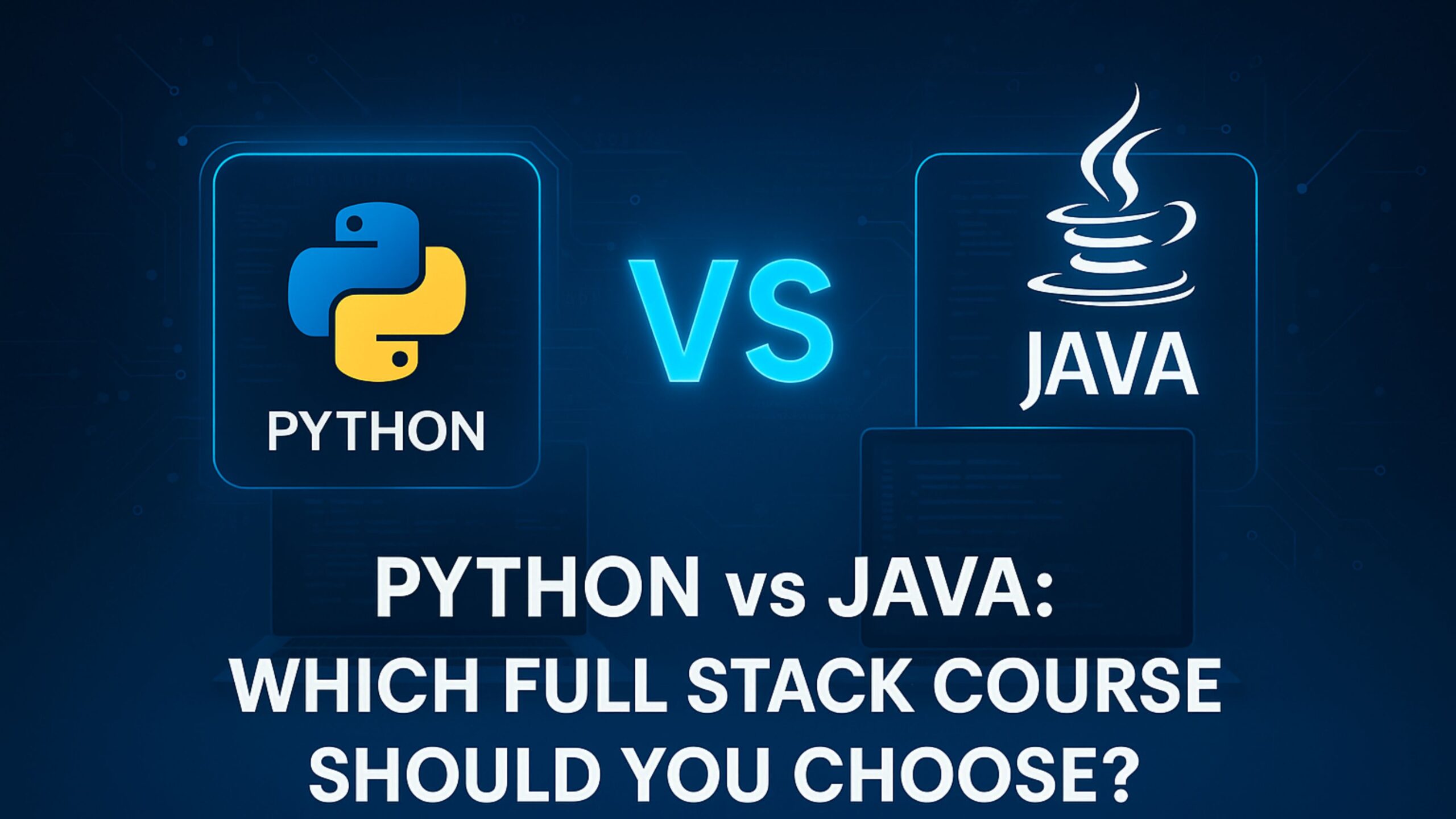Choosing between Python vs Java is one of the most important opinions for anyone planning a future in full stack development. Both languages are important. Both are used by global companies. Both offer excellent careers in India.But they’re NOT the same.One is flexible, simple, and perfect for newcomers.The other is strong, secure, and ideal for enterprise-position development.
As India becomes a global IT hustler, scholars and professionals want to know exactly which full mound course Python Full mound or Java Full mound will give them better job openings, better hires, and better long-term growth.
In this blog, we’ll break down everything you need to know about python vs java, including learning wind, fabrics, payment trends, career compass, and which course fits YOUR pretensions.
This is your complete 2025 companion
Why This Comparison Matters in 2025
The Indian tech assiduity is changing presto.Companies no longer hire inventors who know only one side of development. They want multi-skilled full stack developers who can make, emplace, and scale operations end-to-end.
moment’s digital world depends on:
- pall-native operations
- Microservices
- AI-driven automation
- Responsive front-end gests
- Scalable enterprise systems
Choosing the wrong language can decelerate down your literacy or limit your job options.Choosing the right bone can change your entire career.
That’s why comparing python vs java is such an important moment.
Python vs Java — Overview of Both Languages
Before choosing a course, you must easily understand what Python and Java are, how they work, and what they’re used for.
What Is Python?
Python is one of the simplest, most ultramodern programming languages. It’s known for:
- Clean syntax
- Faster development
- Huge community support
- Massive AI & ML ecosystem
Python powers some of the biggest global platforms:
- Dropbox
- Spotify
- Netflix backend robotization
Python is especially notorious because it supports:
- Full stack web development (Django, Flask)
- Data wisdom
- Machine literacy
- Artificial intelligence
- robotization scripts
- Cybersecurity tools
still, Python is a great choice, If you want a future-evidence skill that works for numerous IT careers.
What Is Java?
Java is aged but extremely strong, secure, and scalable.
It’s the backbone of:
- Banking operations
- E-commerce platforms
- Telecom networks
- ERP systems
- Android apps
- Large enterprise backends
Companies like Amazon, Flipkart, Infosys, TCS, IBM, conscious calculate heavily on Java.Java is considered the most stable and trusted enterprise language in India.
Still, Java is an excellent choice, If you want a structured and high-paying enterprise career.
Key Differences — Python vs Java for Full Stack Development
Let’s break down the pivotal differences so you can decide dashingly.
1. Learning wind and Syntax
Python
- veritably easy to learn
- Simple syntax like English
- Perfect for newcomers
- Faster rendering
- Less complicated rules
illustration
print(” Hello World”)
Java
- More complex syntax
- Requires understanding of OOP generalities
- Ideal for logical thinkers
- More for long-term strong programming foundations
illustration
public class Test{
public static void main( String() args){
(” Hello World”);
}
}
👉 If you want the easiest launch → choose Python Full stack
👉 If you want strong fundamentals → choose Java Full stack
2. fabrics and Ecosystem
fabrics matter because they decide how fast and efficiently you can make operations.
Python Full mound fabrics
- Django (super presto, secure, each-by-one)
- Beaker (featherlight and flexible)
- FastAPI (ultramodern, high-performance APIs)
These are great for:
- AI-ready apps
- Robotization tools
- Startups
- Rapid prototyping
Java Full mound fabrics
- Spring charge (enterprise backbone)
- Hibernate
- Struts
- Jakarta EE
These are perfect for:
- Banking systems
- Scalable web apps
- High-business systems
- Enterprise-position results
👉 Python = Speed Simplicity
👉 Java = Stability Enterprise Power
3. Performance and Scalability
Java
- Faster prosecution
- Superior multi-threading
- Stylish for complex backend systems
- Used in fintech, telecom, and enterprise companies
Python
- Slightly slower than Java
- Great for sense-heavy tasks like AI & ML
- Easier for prototyping and erecting apps snappily
👉 For high-performance apps → Java wins
👉 For AI-enabled apps → Python wins

4. Job openings in India (2025 Demand)
India is one of the biggest requests for both Python and Java inventors.
Python inventor Job Roles
- Python Full mound inventor
- Data Critic
- Machine Learning mastermind
- robotization mastermind
- Backend inventor
Java inventor Job Roles
- Java Full mound inventor
- Backend mastermind
- System Architect
- Android inventor
- ERP inventor
👉 Python gives further variety (web AI pall).
👉 Java gives further stability (banking enterprise e-commerce).
Which Is Better for newcomers — Python or Java?
Most newcomers choose Python because:
- It’s easy
- It’s fast to learn
- It has smaller rules
- It helps make confidence snappily
still, Java is better if:
- You want a career in big companies like Infosys, TCS, Wipro
- You want to make strong sense
- You want to work on scalable systems
- You prefer Android or enterprise backend
👉 For newcomers → Python
👉 For long-term enterprise career → Java

Salary Comparison — Python vs Java Developers in India (2025)
Payment depends on skills, experience, and job position, but average ranges are:
Experience | Python inventor | Java inventor |
0 – 2 yrs | ₹ 4 – ₹ 7 LPA | ₹ 5 – ₹ 8 LPA |
3 – 5 yrs | ₹ 8 – ₹ 14 LPA | ₹ 9 – ₹ 16 LPA |
6 – 10 yrs | ₹ 15 – ₹ 25 LPA | ₹ 18 – ₹ 32 LPA |
elderly places | ₹ 25 – ₹ 45 LPA | ₹ 30 – ₹ 50 LPA |
👉 Java developers earn further in big companies
👉 Python developers earn further in AI & ML fields
Both are high-paying careers the difference comes from specialization.
Industry Applications of Python and Java
Breaking into data wisdom can feel intimidating but with the right roadmap, it’s absolutely attainable.
Step 1: Figure a Strong Foundation
Start with statistics, Python, and SQL. These are the backbone of data analytics.
Step 2: Learn Data Science Tools
Hands- on experience with Tableau, Power BI, and Jupyter Scrapbooks builds credibility.
Step 3: Get Pukka
Enroll in a honored Data Science training program that covers machine literacy, big data, and pall integration.
Step 4: Work on Real- World Systems
Share in Kaggle competitions or open- source systems to apply your knowledge virtually.
Step 5: Produce a Portfolio
Showcase your GitHub law, dashboards, and logical reports. Employers love palpable evidence of chops.
Step 6: Network and Upskill
Join LinkedIn communities, attend hackathons, and follow instructors in the Indian analytics ecosystem.
Challenges and Future Trends
Every career comes with challenges, and data wisdom is no exception.
Challenges
- Fleetly evolving tools and technologies bear constant upskilling.
- Some associations warrant clear data strategies, leading to fractured places.
- The line between data wisdom, AI engineering, and analytics can blur, creating confusion for newcomers.
Unborn Trends
Despite these challenges, the coming five times will be revolutionary:
- AI- driven robotization will review every business function.
- Generative AI & LLMs (like GPT models) will produce new job orders.
- Edge computing & IoT analytics will expand the compass of real- time data processing.
- Ethical AI and data governance will come critical to organizational trust.
India is projected to be among the top three countries encyclopedically for AI and data wisdom employment by 2030. That means those starting moment are entering a golden period of data careers.
Conclusion
A career in data wisdom is further than a job; it’s a gateway to shaping the digital future of India.Whether you’re a pupil aiming for your first analytics part or a professional seeking an AI- driven pivot, your trip starts with the right chops and guidance.
At APEC Training, We empower learners to master real- world data wisdom through assiduity- aligned courses, hands- on systems, and mentorship from experts working in India’s top companies. Our programs cover everything from Python, AI, and machine literacy to pall and big data analytics, icing you’re unborn-ready for the evolving data geography.
Still, now is the time to start because the future belongs to those who can turn data into direction, if you’re serious about erecting a satisfying data wisdom career path in India.



